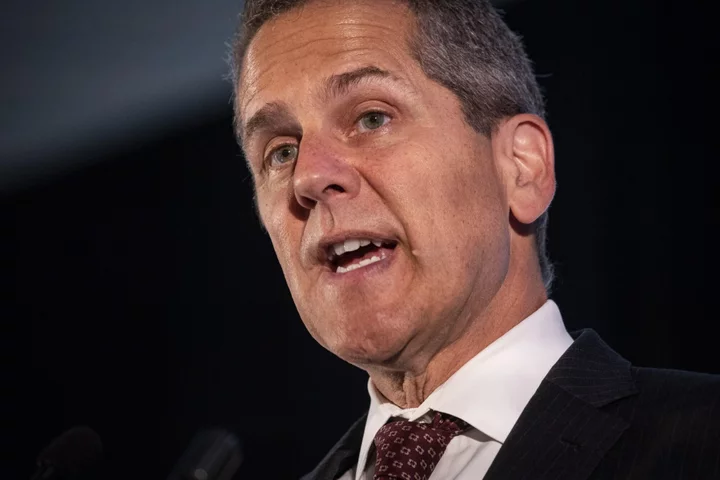The Federal Reserve’s head of supervision wants to broaden the scenarios in annual stress tests to gauge whether big banks can weather shocks and still keep lending.
This year’s health check featured an “exploratory market shock” to the trading books of the eight biggest banks that involved greater inflationary pressure and rising interest rates. Now, Vice Chair for Supervision Michael Barr says he wants to include more than one such hypothetical scenario in coming tests, starting next year.
Barr’s speech is a response to sharp criticism that the Fed’s tests failed to prepare banks for rapid and prolonged interest-rate hikes, highlighting a gap in how agency officials perceive financial risk. Several lenders, including Silicon Valley Bank and First Republic Bank, collapsed earlier this year.
“While our stress test is an important measure of the strength and resilience of the banking system, we must recognize that it does have limitations, as does any exercise,” Barr said Thursday at a Federal Reserve Bank of Boston conference on stress testing.
Read More: US Weighs Leaning on Banks to Curb Hedge Fund Leveraged Trading
Regulators have increasingly raised concerns about hidden leverage in the financial system. Martin Gruenberg, head of the Federal Deposit Insurance Corp., said last month that more attention should be paid to the risks that hedge funds, mutual funds and nonbank lenders pose to the financial system. He flagged high levels of leverage and mortgage lending as areas that warrant a closer look.
In his speech Thursday, Barr said that including more market shocks would help the Fed understand how banks’ trading books and nonbank exposure would change under a range of financial conditions.
“Additional exploratory stress test scenarios could allow supervisors to better probe the internal risk management of firms and assess whether they are holding sufficient capital for their risks,” he said.
The exploratory component in this year’s exams wasn’t used to set capital requirements, and there are no plans to change that.
For 2024’s stress test, more than 30 lenders, including midsize banks, will face a hypothetical scenario that will include a deep recession.
The stress test for 2023 also involved a severe-recession scenario, with the US unemployment rate climbing to 10%, commercial real estate prices dropping 40%, home prices tumbling 38% and the dollar rising against almost all major currencies. All 23 of the large banks weathered the scenario while staying above minimum capital levels and continuing to lend to consumers and businesses.
The stress tests were put in place after the 2007-2009 global financial crisis. They evaluate estimated bank losses, revenue, expenses and resulting capital levels under recession scenarios.
The annual exams are closely watched by the financial industry because passing scores can give banking giants a green light to return billions of dollars to investors in dividends and share buybacks. The results of the stress tests may also result in changes to large banks’ capital requirements.
(Updates starting in second paragraph to add background, quotes.)

